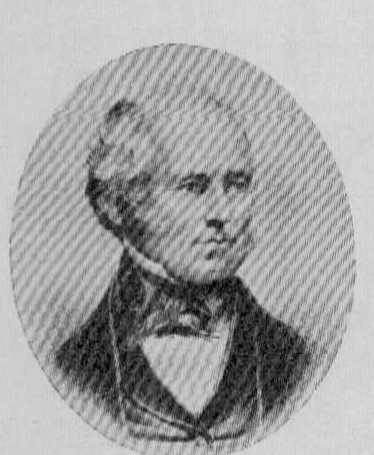
HISTORICAL EVENTS THAT TOOK PLACE ON THIS DAY IN CANADA
4 July

Samuel Cunard
Halifax Greets Liner
In the days of "wooden ships and iron men," the people of Nova Scotia and New Brunswick were the most prosperous, per capita, of all the people in British North America. Shipbuilding yards were turning out vessels, like the Marco Polo (see April 17), which became famous in many parts of the world. This prosperity ended when iron ships powered by steam replaced wooden sailing ships. Strangely enough, two Nova Scotians were responsible, and one of them founded the greatest steamship company in the world.
Joseph Howe (see January 1) had helped create the shipbuilding industry in Nova Scotia. The original "Bluenoses" had been encouraged to go in for farming. Howe had other ideas. Nova Scotian soil was not good enough for prosperous farming, and he urged men to take advantage of the timber resources and fine harbours, and go in for shipbuilding. In. 1838, however, when Howe was crossing the Atlantic in a windjammer, the steamship Sirius came over the horizon and passed his ship "with the speed of a hunter while we were moving with the rapidity of an ox-cart." Howe was so impressed that he urged the Colonial Office in Britain to subsidize fast ships to carry the mail between Liverpool and Halifax.
It was then that the other Nova Scotian, Samuel Cunard, who had made a fortune in lumber and sailing ships, stepped into the picture. He won the contract to carry mail and passengers in fast steamships between Liverpool and Halifax, and joining with some British businessmen, he established the now famous Cunard Line. The first Cunarder, Britannia, sailed into Halifax on July 4, 1840, and then went on to Boston. The voyage from Liverpool to Boston was completed in 14 days 8 hours at a speed of 81/2 knots. The Liverpool to Halifax run was made in 12 days 10 hours. Cunard himself was received with great enthusiasm everywhere. When he arrived in Boston, he received 1,800 invitations to dinner, within twenty-four hours!
The first iron Cunarder was the Scotia (3,871 tons), the largest ship in the world when she was built in 1862. Scotia would look like a tug boat alongside the famous Cunarders Queen Mary and Queen Elizabeth, both more than 80,000 tons.
Among the most famous Cunard liners of all time have been Lusitania (sunk by a German submarine in World War I), Mauretania, Berengaria, and Aquitania, which was the flagship of the convoy that carried the First Canadian Division to Britain in World War II.
OTHER NOTABLE EVENTS ON THIS DAY IN CANADIAN HISTORY
4 July
-1609 Champlain discovered Lake Champlain in New York.
-1634 Trois-Rivières, Quebec, was founded by a fur trader named La Violette who was later flogged for selling liquor to the Indians.
-1793 Alexander Mackenzie left his canoe on the Blackwater River and began walking to the Pacific.
-1865 An American consul read the Declaration of Independence at Cordova Bay, near Victoria, British Columbia.
-1873 The Montreal Herald published letters leading to the resignation of Sir John A. Macdonald.
-1886 The first C.P.R. transcontinental train arrived at Port Moody, near Vancouver. It left Montreal on June 28.
-1945 Canadians entered Berlin as part of a garrison force.